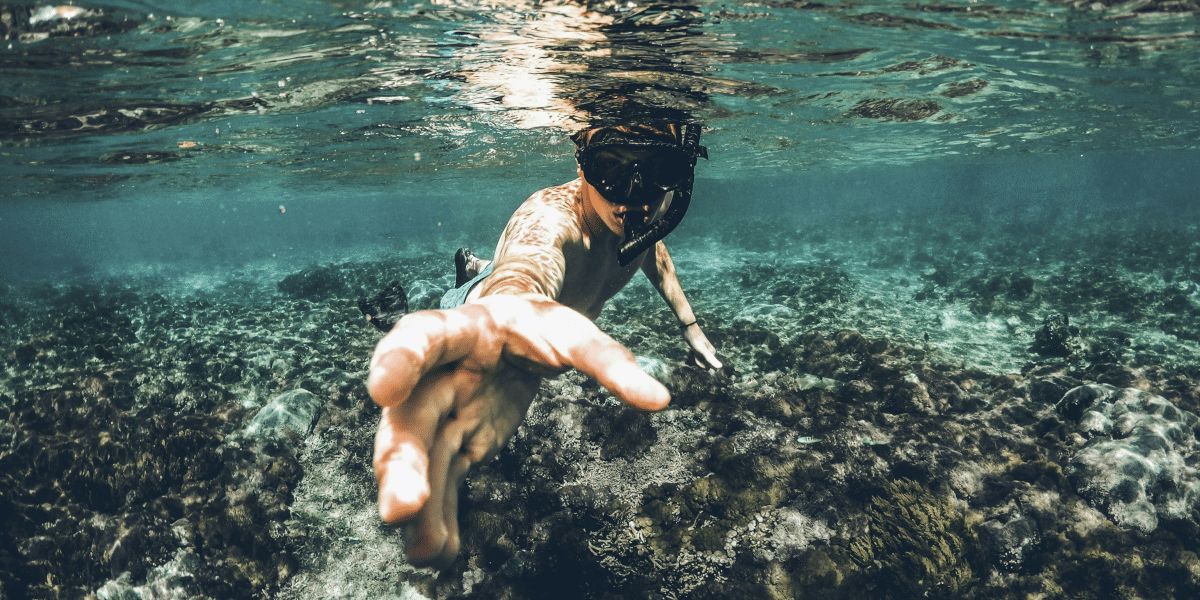Ready to take your swimming to the next level? If you’re looking to shave those precious seconds off your time and leave your competitors in your wake, it’s time to break down your stroke, focus on technique, and add some speed-focused drills into your workouts.
While power matters in swimming, speed is also largely about efficiency. A powerful swimmer who churns through the water inefficiently will lose out to a less muscular swimmer with a technically refined stroke. This is where drills come in!
Think of drills like breaking your stroke down to its individual components. They help you isolate and pinpoint areas for improvement in your technique. When you put those refined pieces back together, you’ll see the difference in the clock.
Ready to try some speed-focused drills? Here are a few to get you started:
- Fingertip drag: This drill focuses on your freestyle recovery (the part of the stroke where your arm comes out of the water). Drag your fingertips along the surface of the water as your arm swings forward, emphasizing a high elbow recovery.
- Shark fin drill: For fly, breast, or free. Swim with one arm extended in front of you like a shark fin and the other by your side, focusing on a strong kick and maximizing rotation from your core.
- Kick on your side: Grab a kickboard, extend one arm in front, and kick on your side with the other arm by your body. This helps you isolate your kick and identify any imbalances or weaknesses.
- Single-arm swimming: Perfect for identifying any unevenness in your freestyle stroke. Swim one length using only your right arm, then one length with just your left arm.
Important Note: Don’t try to do these drills at top speed right away. Focus on slow, precise movements to really analyze your technique and nail the form before gradually adding speed.
Beyond Drills: Key Components of a Speed Workout
Let’s be honest, swimming endless laps at the same pace can get a little tedious, especially if speed is your goal. That’s where a structured workout plan comes in – think of it as your blueprint for a faster, more powerful swim. Here’s why each part of the workout is crucial:
Picture yourself jumping into a cold pool and immediately launching into a full-speed sprint – not a great idea, right? Your warm-up is your body’s “on-ramp” to the tougher work ahead. Some light swimming, combined with dynamic stretches on deck (think arm circles, leg swings, and torso twists), gets your blood flowing, gently raises your heart rate, and prepares your muscles and joints for the more intense work ahead.
Now it’s time for the drills. This is where you become a swimming detective! Drills are perfect for zoning in on specific elements of your stroke, identifying those little tweaks that will make you more efficient in the water. By slowing down and really focusing on correct technique, you’re essentially reprogramming your muscle memory, which will pay off during your speed sets. As a swim instructor once noted, “If you want to go fast, first you have to go slow.”
Finally, the part you’ve been waiting for – the main set! This is where you unleash that raw power and speed. Think short bursts of almost all-out effort (we’re talking 25 or 50-meter distances here). The key is to push yourself as close to your limit as possible, and then take short rest breaks to recover before the next sprint. This type of training helps build both cardiovascular endurance and those fast-twitch muscle fibers responsible for explosive power.
Speed Doesn’t Happen Overnight
It’s tempting to try and go all-out, all the time when chasing faster times. But the best way to improve your swimming speed is through consistent, focused practice. Here are some tips:
- Track your progress: Use a stopwatch or pool timer to keep an eye on your sprint times. Seeing those improvements, however small, is seriously motivating.
- Quality over quantity: Don’t just add more laps mindlessly. Focus on nailing your technique in those drills and giving your all during speed sets.
- Cross-training matters: Build strength and endurance outside the pool with exercises like running, cycling, or strength training.
- Don’t neglect recovery: Your body needs rest and proper nutrition to rebuild and get stronger.
The pursuit of the perfect lap time, a new personal best, or a spot on that podium can be all-consuming. Yet, in the quest to swim faster, it’s easy to forget why we fell in love with the sport in the first place. Sometimes, it’s crucial to take a step back from obsessing over the clock and find joy in the process.
Think about those moments in the pool where it all seems to flow effortlessly, or those hard workouts where you surprised yourself by pushing through the fatigue. There’s a great deal of satisfaction in knowing you’re consistently showing up and putting in the work–even on the days when you don’t feel your best. Those are the times when true grit is formed, and progress – even if not reflected on the scoreboard yet – is happening.
Remember, every Olympic champion started as someone who simply loved to swim. There will be frustrating practices and disappointing races, but don’t let those setbacks dampen your love for the sport. Maintain a positive attitude, celebrate the small victories, and let those moments inspire you to keep striving for the bigger goals. Ultimately, swimming is a journey, not just a destination. As a champion swimmer once noted, “In the pool, every day presents a new challenge. It’s about setting goals and striving to be better than I was yesterday.”








